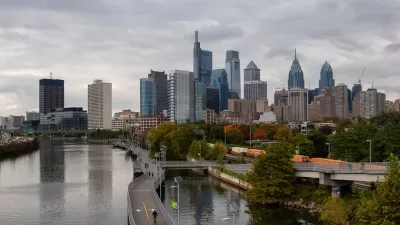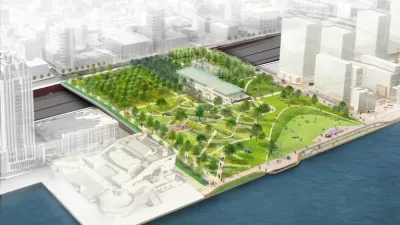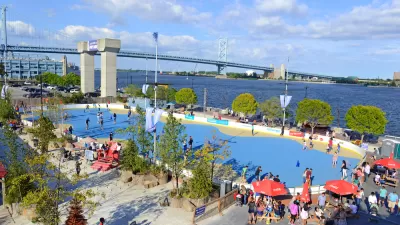Several highway-widening projects on the East Coast were approved under the pretense of expected growth in traffic totals. Now planners are scrambling to figure out the new normal.

“Highway planners misjudged the future because the Great Recession reduced both commercial and passenger travel, and because of an unexpected drop in driving by young adults,” writes Paul Nussbaum.
The article includes a lengthy list of highway projects that moved forward based on projections that now look anything but clairvoyant.
- For the $2.5 billion project to widen the New Jersey Turnpike, the planners estimated that northbound traffic volume would increase by nearly 68 percent above 2005 levels and southbound traffic would increase by 92 percent by 2032. Quite the opposite trend has taken place: “Now, one-third of the way through that 27-year forecast, turnpike traffic is actually about 10 percent lower than it was in 2005.”
- “In 2007, the Pennsylvania Turnpike Commission assumed that traffic would grow 3 percent to 5 percent every year to help pay for debt as it took on a new obligation to contribute up to $900 million a year to fix other roads around the state.” Instead, “traffic has been essentially flat.”
- “And when the Delaware River Joint Toll Bridge Commission decided in 2003 to replace the 50-year-old, four-lane Scudder Falls Bridge on I-95 with a $328 million, nine-lane, 180-foot-wide toll bridge, it assumed that traffic would increase 35 percent by 2030.” Rather, “bridge traffic has declined slightly and is now below the levels of 2002.”
- The Schuylkill Expressway and Interstates 95 and 476 have also experienced reductions in traffic over the last six years.
FULL STORY: Drop in traffic on area highways forces review of plans

Study: Maui’s Plan to Convert Vacation Rentals to Long-Term Housing Could Cause Nearly $1 Billion Economic Loss
The plan would reduce visitor accommodation by 25,% resulting in 1,900 jobs lost.

North Texas Transit Leaders Tout Benefits of TOD for Growing Region
At a summit focused on transit-oriented development, policymakers discussed how North Texas’ expanded light rail system can serve as a tool for economic growth.

Why Should We Subsidize Public Transportation?
Many public transit agencies face financial stress due to rising costs, declining fare revenue, and declining subsidies. Transit advocates must provide a strong business case for increasing public transit funding.

How to Make US Trains Faster
Changes to boarding platforms and a switch to electric trains could improve U.S. passenger rail service without the added cost of high-speed rail.

Columbia’s Revitalized ‘Loop’ Is a Hub for Local Entrepreneurs
A focus on small businesses is helping a commercial corridor in Columbia, Missouri thrive.

Invasive Insect Threatens Minnesota’s Ash Forests
The Emerald Ash Borer is a rapidly spreading invasive pest threatening Minnesota’s ash trees, and homeowners are encouraged to plant diverse replacement species, avoid moving ash firewood, and monitor for signs of infestation.
Urban Design for Planners 1: Software Tools
This six-course series explores essential urban design concepts using open source software and equips planners with the tools they need to participate fully in the urban design process.
Planning for Universal Design
Learn the tools for implementing Universal Design in planning regulations.
City of Santa Clarita
Ascent Environmental
Institute for Housing and Urban Development Studies (IHS)
City of Grandview
Harvard GSD Executive Education
Toledo-Lucas County Plan Commissions
Salt Lake City
NYU Wagner Graduate School of Public Service





























